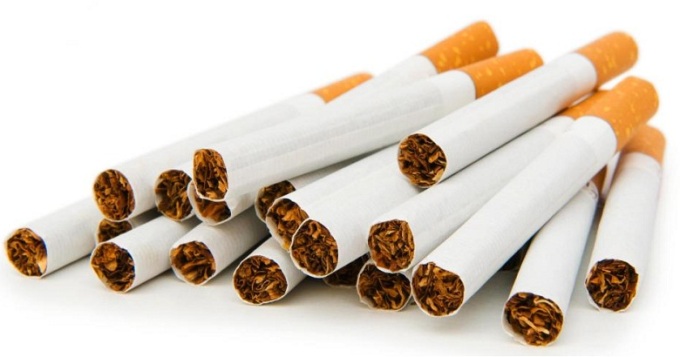The Pump market in Indonesia witnessed a CAGR of 4.3% during the
period 2011 to 2016. The small number of large companies operating in
this space during this period gave manufacturers the freedom to decide
pricing patterns for various centrifugal and positive displacement
pumps. The increasing investment by the Government of Indonesia towards
clean water supply, wastewater treatment and irrigation development had
translated into higher pump sales witnessed by major manufacturers
including Grundfos, Torishima and Ebara during the review period. The
entry of new players into the pumps market had resulted in mass
competition. Manufacturers had offered deep discounts and price cuts
along with complimentary spare parts in order to gain market dominance
and this had impacted higher revenue growth of the overall pump market..
Around a decade ago, the market for pumps in Indonesia was predominantly import driven with majority of domestic demand being met through imports from Japan, China, Singapore and Europe. Imported pumps have remained a good market for Indonesia as a result of high brand recognition for these products coupled with durability, efficiency and reliability. The entry of manufacturers that were domestically producing and selling competitively priced pumps in the country caused more end consumers to purchase pumps from these reliable brands. The increasing trend towards the demand for domestically manufactured pumps has caused imports to constitute around 70% of domestic demand in recent years. The Indonesian Government accounted for a robust proportion of pump sales in the country during 2016; which is mainly provided to farmers to bringing in more land under irrigation for better agriculture development; while a portion of what is procured from manufacturers is also used by the government for water supply and sewage and wastewater treatment plants.
The population in the country has been steadily growing at an average of 1.5% during the review period while the urban population witnessed an average growth of 2.8% during the review period. The growth in population is directly linked to the increasing need for water supply and sewage and wastewater generated by the country
According to Research Analyst at Ken Research, “Existing Pump manufacturers should look to set up precise sales and service centers close to the industries they target in order to ensure prompt delivery of products and quality service support. New entrants should look to collaborate with foreign companies to set up manufacturing facilities for pumps within the domestic territory. In addition to this, the Indonesian Government should provide subsidies in the form of land, buildings and machinery and encourage a positive business climate in the country through the form of tax breaks.”
The report titled “Indonesia Pumps Industry Outlook to 2021 - Increasing Government Initiatives towards Irrigation and Wastewater Treatment with Expansion of Industrial Sector to Drive Growth” provides a comprehensive analysis regarding the performance of the Pumps Market in Indonesia. This report will help Industry consultants, Pump Manufacturers and dealers, Manufacturing Industries, Real Estate Companies, the Indonesian Government, potential entrants and other stakeholders to align their market centric strategies according to the ongoing and expected trends in the future.
Topics Covered in the Report
https://www.kenresearch.com/manufacturing-and-construction/machinery-and-parts/indonesia-pumps-market-report/83202-97.html
Related Reports:
India Pumps Market Outlook to 2019 - Driven By Government Investments And Technological Advancements
India PVC Pipes and Fittings Industry Outlook to 2020 - Expanding Irrigated Area and Construction Sector to Stimulate Growth
India uPVC Doors and Windows Market Outlook to 2020 - Growth in Residential Apartments and Development of Smart Cities to Drive Future
Contact Us:
Ken Research
Ankur Gupta, Head Marketing & Communications
Ankur@kenresearch.com
+91-9015378249
Around a decade ago, the market for pumps in Indonesia was predominantly import driven with majority of domestic demand being met through imports from Japan, China, Singapore and Europe. Imported pumps have remained a good market for Indonesia as a result of high brand recognition for these products coupled with durability, efficiency and reliability. The entry of manufacturers that were domestically producing and selling competitively priced pumps in the country caused more end consumers to purchase pumps from these reliable brands. The increasing trend towards the demand for domestically manufactured pumps has caused imports to constitute around 70% of domestic demand in recent years. The Indonesian Government accounted for a robust proportion of pump sales in the country during 2016; which is mainly provided to farmers to bringing in more land under irrigation for better agriculture development; while a portion of what is procured from manufacturers is also used by the government for water supply and sewage and wastewater treatment plants.
The population in the country has been steadily growing at an average of 1.5% during the review period while the urban population witnessed an average growth of 2.8% during the review period. The growth in population is directly linked to the increasing need for water supply and sewage and wastewater generated by the country
According to Research Analyst at Ken Research, “Existing Pump manufacturers should look to set up precise sales and service centers close to the industries they target in order to ensure prompt delivery of products and quality service support. New entrants should look to collaborate with foreign companies to set up manufacturing facilities for pumps within the domestic territory. In addition to this, the Indonesian Government should provide subsidies in the form of land, buildings and machinery and encourage a positive business climate in the country through the form of tax breaks.”
The report titled “Indonesia Pumps Industry Outlook to 2021 - Increasing Government Initiatives towards Irrigation and Wastewater Treatment with Expansion of Industrial Sector to Drive Growth” provides a comprehensive analysis regarding the performance of the Pumps Market in Indonesia. This report will help Industry consultants, Pump Manufacturers and dealers, Manufacturing Industries, Real Estate Companies, the Indonesian Government, potential entrants and other stakeholders to align their market centric strategies according to the ongoing and expected trends in the future.
Topics Covered in the Report
- Pumps Sales Indonesia
- Water Pumps Market
- Solar Pumps Industry
- Submersible Pumps Market Growth
- Positive Displacement Pumps Market Overview
- Rotary Pumps Market Growth
- Single Stage Submersible Pumps Market
- Building Pumps Indonesia Products
- Grundfos Water Pumps Market Share
- Water Supply Pumps Industry Sales
- Wilo Pumps Sales
- Market Share Analysis Pumps Market
https://www.kenresearch.com/manufacturing-and-construction/machinery-and-parts/indonesia-pumps-market-report/83202-97.html
Related Reports:
India Pumps Market Outlook to 2019 - Driven By Government Investments And Technological Advancements
India PVC Pipes and Fittings Industry Outlook to 2020 - Expanding Irrigated Area and Construction Sector to Stimulate Growth
India uPVC Doors and Windows Market Outlook to 2020 - Growth in Residential Apartments and Development of Smart Cities to Drive Future
Contact Us:
Ken Research
Ankur Gupta, Head Marketing & Communications
Ankur@kenresearch.com
+91-9015378249






